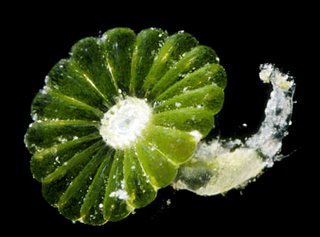 'Acetabularia sp. parvula, a one-celled algae, was found at French Frigate Shoals.'
'Acetabularia sp. parvula, a one-celled algae, was found at French Frigate Shoals.'Researchers have discovered what appear to be more than 100 new species of marine animals on a three-week voyage to French Frigate Shoals, officials said yesterday.
Crabs, corals, sea cucumbers, sea squirts, worms, sea stars, snails and clams were among the unusual-looking samples collected by researchers aboard the National Oceanic and Atmospheric Administration's Oscar Elton Sette from this part of the Northwestern Hawaiian Islands Marine National Monument.
Among the finds of the voyage that returned to Honolulu on Sunday were a photogenic hermit crab that wears a sea anemone around its neck like a medallion and has shiny golden claws.
Unlike previous research, which focused on "the big stuff" like sharks, fish, sea turtles and Hawaiian monk seals, this trip targeted no-backbone creatures just a few inches in size or smaller.
The international crew of experts will compile their research as part of the Census of Marine Life, a worldwide project to document the biological diversity of various parts of the world's oceans....
And while the group was finding handfuls of apparent new species daily, some surprises were what it didn't find, said principal investigator Rusty Brainard, chief of the Coral Reef Ecosystem Division of NOAA's Pacific Islands Fishery Science Center.
For example, Christmas tree worms and porcelain crabs, both common residents of coral reefs in the Main Hawaiian Islands and many other places in the world, weren't seen at all, Brainard said...
"This is a trip I've been waiting to take for four years," Godwin said. "A lot of us are interested in saving coral reefs and determining what makes them tick."
To do that, he said, you've first got to know what's living there.
Also - on the web:
Northwestern Hawaiian Islands Multi-Agency Education Project » www.hawaiianatolls.org
The Census of Marine Life » www.coml.org
No comments:
Post a Comment